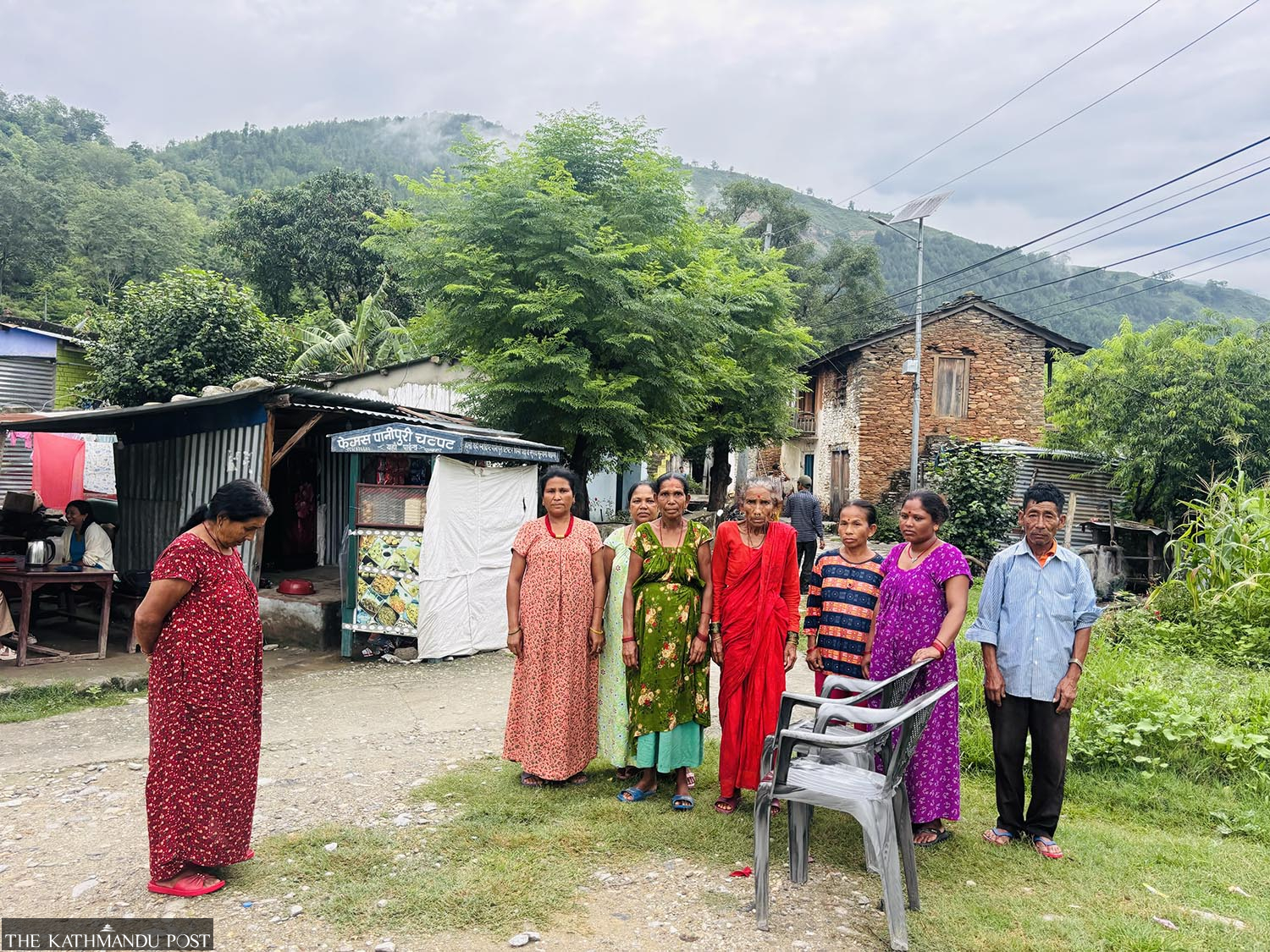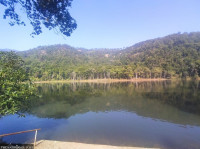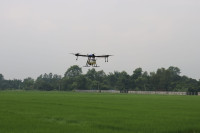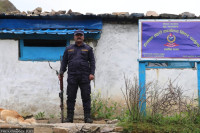Sudurpaschim Province
Budhiganga threatens Sanfebagar every year
Families in Pulbazar area are hit hard by repeated flooding and displacement. Calls for lasting solutions go unheard.
Menuka Dhungana
Mithu Badi, 48, has a hard time sleeping at night during the monsoon. Her home in Pulbazar, a settlement in ward 4 of Sanfebagar Municipality, is close to the Budhiganga river, which swells every year with heavy rain.
“When the river rises, the water enters our house,” Badi says. “We spend nights outside in the rain. There’s nowhere else to go.”
Badi adds that the problem has persisted for years. “Last year, the entire market area got flooded,” she says. “We begged the authorities to relocate us, but no one listened.”
Pulbazar, one of the oldest settlements in the municipality, is home to several families, including three from the marginalised Badi community. For them, every monsoon brings fresh trauma—displacement, loss of property, and fear for their lives.
While some residents from other communities have land elsewhere and can temporarily move during the rains, the Badi community has no such option. “We don’t have another home or land. Every year, the river enters our house. We grab a bag of clothes and run,” says Ramesh Badi, another resident. “This has happened so many times that we’ve lost count. But still, no authority acts.”
Despite the settlement’s proximity to the municipal office, residents say their voices remain unheard. Ramesh adds that political parties make promises during elections, pledging to manage the settlement, but none return after securing votes.
“They’ve built a concrete road through the middle of Pulbazar. But what use is a road that gets washed away every year?” he asks. “Our problems are never taken seriously.”
Makar Bahadur Rai, who moved to Sanfebagar from Jhapa about four decades ago for work, has also been affected repeatedly. Now a permanent resident, he built a small house through years of labour. But every monsoon, he too fears losing everything.
“Last year, our house was submerged. Everything was destroyed—clothes, food, everything. This year, I haven’t found a safer place either,” he says. “We live right next to the municipal office, but no one has come to help.”
The flooding is not limited to Pulbazar. The entire municipality faces growing threats from the Budhiganga. According to Ram Bahadur Kunwar, another resident of the area, the river’s erosion has already destroyed large swathes of farmland.

“I had land ownership documents of five plots, totalling 12 ropanis of land. All of it is gone—swallowed by the swollen river,” Kunwar says. “Even Baidyanath Dham, one of Nepal’s four sacred sites, is shrinking every year due to the floods.”
Though budgets worth millions are allocated annually for embankment work in Sanfebagar, Kunwar says these are often wasted. “Since Nepal adopted federalism, every year there’s a budget of Rs50 to 60 million for embankments here. But the money goes to small, fragmented projects controlled by those with political access,” he says.
The embankments are routinely washed away by the first heavy flood of the season, he says, adding that long-term, well-structured solutions have never been prioritised.
“The money flows like the river—right into Budhiganga. We need a proper project, not piecemeal efforts. RCC [reinforced cement concrete] walls and permanent structures are needed if we truly want to save this place.”
Studies over the years have confirmed that Sanfebagar is one of the most vulnerable areas in Achham district due to the river’s unpredictable course. Mayor Rajendra Kunwar says around 15,000 people are at high risk.
“Most of the market area is exposed to flooding,” he says. “We’ve developed several plans for management, but there’s little proper coordination or budget utilisation from the central or provincial governments.”
Mayor Kunwar adds that individual efforts by those with access to funds have led to uncoordinated and often ineffective embankment work. “There is no synergy with the municipal government in most of these works,” Kunwar says.
The Sudurpaschim provincial government allocated Rs30 million for gabion embankments in fiscal year 2024-25. An additional Rs20 million was allocated in the current fiscal year. However, the latter project was stuck in the tendering phase and failed to begin.
Kunwar stresses that the local government alone cannot manage the scale of the crisis. “All three levels of government must work together to save Sanfebagar,” he says. “Without a coordinated, long-term project, this area will continue to suffer destruction every monsoon.”




 9.59°C Kathmandu
9.59°C Kathmandu












